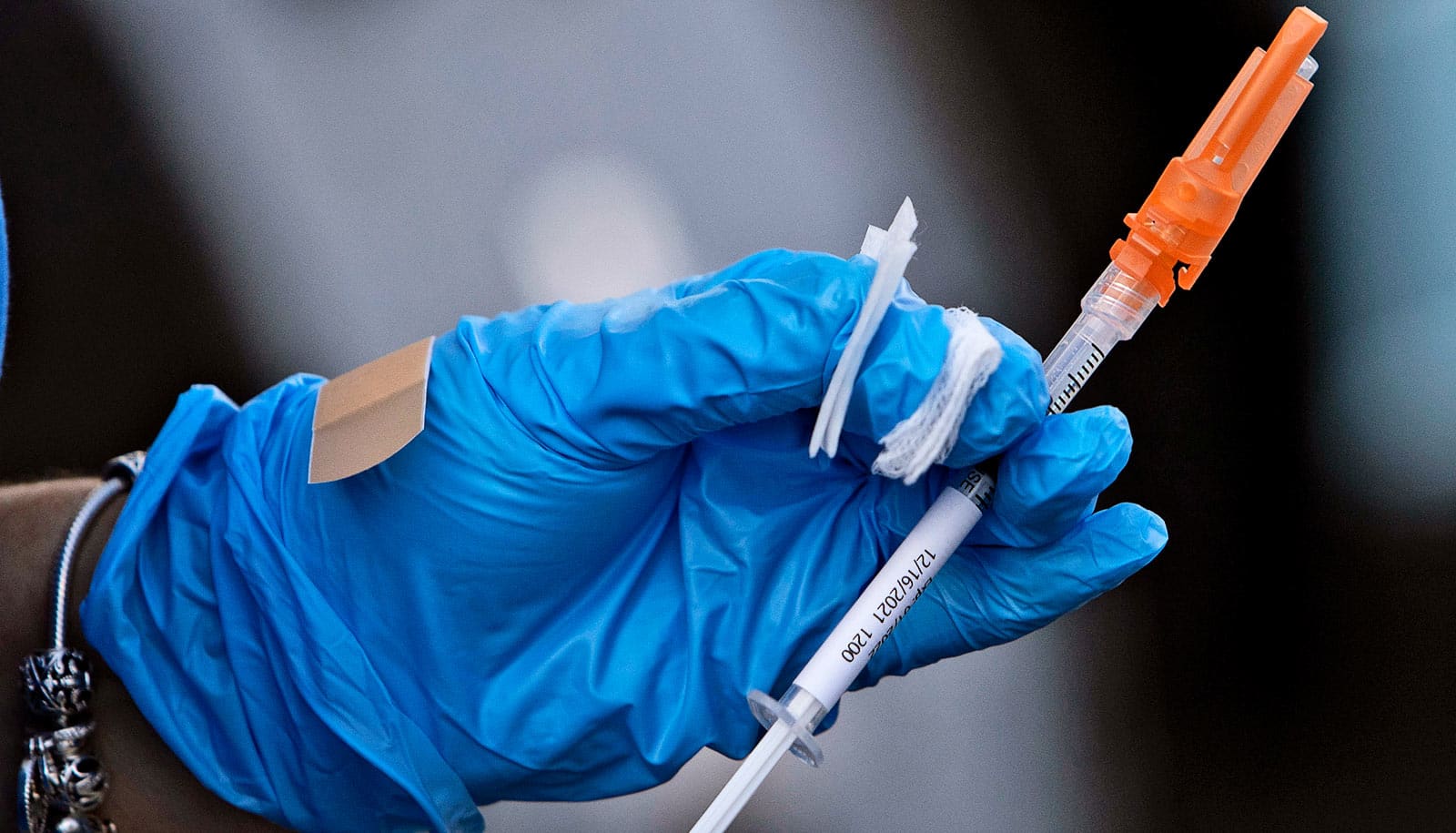Researchers have identified three drugs that could reduce mortality in severely ill COVID-19 patients.
Despite the availability of highly efficacious vaccines, SARS-CoV-2 still causes serious medical complications. The lack of an effective drug treatment for hospitalized patients with severe COVID-19 has contributed to the more than six million deaths worldwide since the beginning of the pandemic, including more than 50,000 deaths in May 2022 alone.
To address this therapeutic gap, the researchers studied host biological responses of patients hospitalized with severe COVID-19, looking for differences between patients who recovered and those who succumbed to the disease.
They found that certain cellular pathways were overactivated at the time of intensive care unit (ICU) admission in the deceased patients. The researchers then identified three existing drugs targeting these pathways.
Their study in Science Advances provides the required preclinical data to support the testing of these drugs—tacrolimus, zotatifin, and nintedanib—in controlled clinical studies.
“We identified overactivation of messenger RNA metabolism, RNA splicing, and interferon signaling pathways in patients who would not survive,” says co-first author of the study Vinicius Fava, a research associate at the Research Institute of the McGill University Health Centre (RI-MUHC).
“The identification by different assays of these differentially activated pathways in the cells of COVID-19 survivors and deceased patients suggests that they are determinants of prognosis and makes them promising targets for pharmacological intervention at the earliest point of hospitalization of critically ill patients.”
The researchers performed a series of cellular and genomic analyses on seven patients hospitalized in the ICU of the McGill University Health Centre, in Montreal, Canada, at the start of the pandemic, between March and April 2020. These patients, of whom three died and four recovered, had the same level of disease severity on the WHO ordinal scale at the time of ICU admission.
The team of researchers characterized the transcriptome (expression of messenger RNA molecule) and the epigenetic landscape (alterations in the DNA structure that affect the ability of cells to regulate gene expression) of the patients’ immune cells at different timepoints: at their admission, at day 5, and at day 15 post admission, to monitor disease evolution. They compared the data between the deceased patients, those who survived, and six healthy individuals.
Specifically, the team used single-cell RNA sequencing to understand the cellular composition and the physiological state of Peripheral Blood Mononuclear Cells (PBMCs) following hospitalization. PBMCs are critical components of the immune system that mediate the response to pathogens entering the human body.
The analyses focused on three major PBMC cell populations: B cells, myeloid cells, and T cells. The team found significant differences in proportions of T cells and myeloid cells between patients who exhibited critical versus moderate symptoms. Critically ill patients at day 5 and day 15 showed a significant reduction of T cells (P = 0.006) and a significant increase of myeloid cells (P = 0.04), suggesting that COVID-19 severity has an impact on PBMC proportions.
“Our results show a strong correlation of PBMC composition with disease progression. Critically ill patients with poor prognosis showed a significant reduction of T cells and a significant increase of monocytes, consistent with previously reported findings in patients suffering from severe COVID-19,” write the authors of the study.
In contrast, at the time of hospital admission, the researchers detected significant changes in the expression of genes in key molecular pathways that are associated with epigenetic changes in monocytes, a type of white blood cells that transform into macrophages, i.e., cells capable of traveling to an area where an infection is present to kill the pathogen and control proliferation.
“This study confirms the pivotal role of monocytes in COVID-19 severity and disease prognosis, as well as the involvement of interferon pathways in the development of COVID-19,” says co-senior author David Langlais, assistant professor in McGill’s School of Biomedical Sciences based at the McGill Genome Centre.
“It also suggests that variations in transcriptional activity, and the accompanying epigenomics changes, mostly occurred at an early stage of COVID-19 disease, dictating how the disease will evolve in terms of severity and final outcome.”
The researchers used various approaches to identify drugs that could suppress the cellular pathways overactivated in monocytes of patients who succumbed to COVID-19.
The initial approach resulted in more than 1,500 candidate drugs, which were narrowed down to 53 candidate drugs/compounds previously used to treat cancers and/or inflammatory conditions. Using drug-protein and protein-protein interaction databases, the team was finally able to identify three promising candidate drugs (tacrolimus, zotatifin, and nintedanib) that act on the targeted pathways.
“Our work demonstrates the power of combining transcriptomic and epigenomic analyses to identify biological factors that influence the evolution of COVID-19 hospitalization and the survival of patients with severe disease,” says co-senior author Erwin Schurr, a scientist in the Infectious Diseases and Immunity in Global Health Program at the RI-MUHC and professor in McGill’s medicine department.
“We are looking forward to clinical trials that hopefully will confirm the efficacy of the three drugs to reduce mortality of severely ill COVID-19 patients.”
Additional researchers are from RI-MUHC, the Canadian Centre for Computational Genomics (C3G), and the McGill Genome Centre.
Funding for this study came from the Canadian Institutes of Health Research (CIHR) and the McGill University Interdisciplinary Infection and Immunity Initiative (MI4), thanks to the generosity of multiple donors to the MUHC Foundation COVID-19 Emergency Fund.
The researchers are grateful to the patients who have participated in this study.
Source: McGill University



